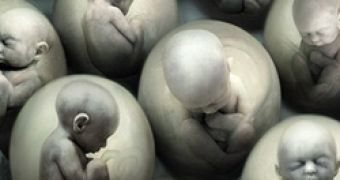A cloned Scarlet Johanson may be the dream of any man and a Californian company has just made the first step toward this purpose: for the first time, scientists have achieved cloned human embryos using DNA extracted from adult skin cells, as reported in the Stem Cells journal.
"That's an important first step toward generating embryonic stem (ES) cell lines from such embryos, which can be used to study and treat diseases such as diabetes and Parkinson's," stem cell researcher George Daley of Harvard Medical School in Boston said.
By achieving cloned human embryos starting with cells from patients with various diseases, researchers hope to come with new treatments using the transplant of cloned tissues and even organs.
In 2007, a team managed to turn skin cells into ES-like cells, but the real embryonic cells are more pluripotent cells that can turn into any cell type, generating any type of tissue.
The team at Stemagen, a biotech company based in San Diego, operated with skin cells donated by two men and 25 eggs (oocytes) donated by women at a fertility center. The nuclei (comprising DNA) from the eggs were removed and replaced with DNA from the male skin.
"Two of the eggs became 5-day-old embryos, or blastocysts, that were clones of the male donors. That's an "unexpectedly high" success rate," the company said in a statement. "The key to the team's success was utilizing fresh, mature oocytes from females of proven fertility," lead researcher Andrew French said.
Double DNA analysis showed that two of the blastocysts possessed the DNA of the male donor cells. The mitochondrial DNA was clearly from the oocyte while the nuclear DNA from the male skin. The goal of the researches is to extract ES cells from the inner cell mass of cloned blastocysts and create a new cell line from them; this will eliminate any doubt concerning the method's effectiveness. Those ES cells could be used in treatments. Some doubt that this could be so easily achieved, pointing to the presence of chromosomal abnormalities in the achieved embryos.
"The blastocysts in the paper look very unhealthy. I would guess these clones are abnormal, too." said Robert Lanza of Advanced Cell Technology in Worcester, Massachusetts. Andrew French responded that the donor clinic "has got pregnancies from IVF [in vitro fertilization] embryos that look similar."
Two months ago, another team achieved ES cells from cloned monkey blastocysts, a first in the case of primates.

 14 DAY TRIAL //
14 DAY TRIAL //